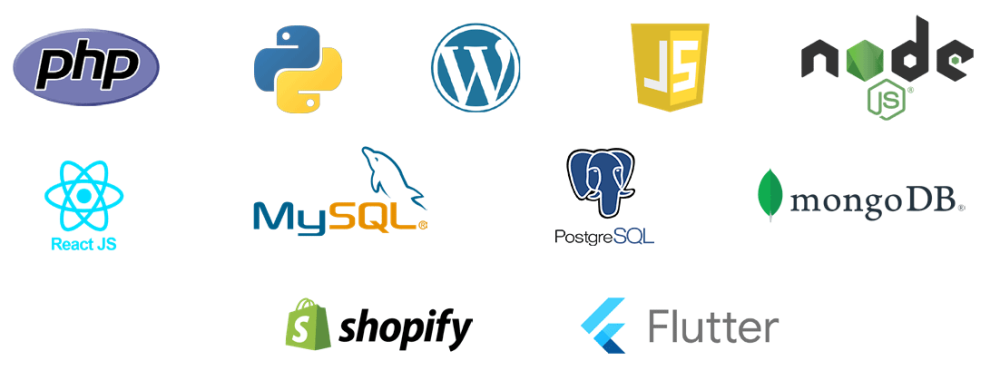In-House vs. Outsourced Software Development: Pros and Cons
When your business needs a custom software solution, app, or digital platform, one of the biggest decisions you’ll make is choosing between in-house vs. outsourced software development.
Should you hire your own team and keep development in-house, or partner with an external agency to outsource the work?
Both options have clear advantages and trade-offs. Let’s break them down so you can decide what fits your goals best.

What is In-House Software Development?
In-house software development means hiring and managing your own dedicated team of developers, designers, testers, and project managers. These professionals are employed by your company, work under your direction, and are fully immersed in your business culture, goals, and vision.
This approach gives you complete control but also comes with significant responsibilities: financial, managerial, and operational.
Benefits of In-House Software Development
Building your own in-house development team comes with several strategic advantages. It allows you to maintain control, nurture specialized knowledge, and create solutions that truly reflect your brand and long-term goals.
Some other benefits are listed below:
Tailored Customization
An internal team is steeped in your brand’s values and customer needs. They can create highly customized solutions aligned with your long-term vision, without compromise.
Enhanced Management and Oversight
With an in-house team, you have direct visibility into progress. You can pivot priorities, manage workflows, and ensure everyone is working toward the same goals without relying on external communication channels.
Greater Responsibility and Accountability
When your team works directly for you, accountability is clear. Bugs, delays, or issues are owned and resolved internally, with no finger-pointing between vendors.
Ownership of Intellectual Property
All source code, designs, and documentation remain 100% yours. There’s no dependency on third parties for maintaining or scaling your system.
Long-Term Cost Efficiency
While building an in-house team requires higher upfront costs, over time, it can prove efficient if you consistently need large-scale development. Your investment builds institutional knowledge and internal expertise.
Drawbacks of In-House Software Development
While having an internal team offers many advantages, it also comes with challenges. Managing website development costs, hiring skilled talent, and maintaining efficiency can be difficult for many businesses. Some other.
Some other drawbacks are listed below:
Limited Expertise
Your internal team may excel in some areas but lack experience in specialized technologies or frameworks. This can limit innovation or slow down delivery.
Elevated Operational Expenses
Salaries, benefits, office space, tools, and ongoing training add up quickly. For many businesses, maintaining an internal team becomes cost-prohibitive.
Restricted Talent Pool
Finding skilled developers locally isn’t always easy. In smaller markets, like Nepal, you may struggle to access the diverse expertise required for complex projects.
Difficulty Recruiting the Right Professionals
Hiring top-tier web developers takes time, effort, and money. And even after hiring, turnover can disrupt your projects.
When to Use In-House Software Development
In-house development is the right choice when software plays a central role in your business strategy. It’s ideal for organizations that need complete control over how their systems evolve and want to build long-term technical expertise within their team. If you have the time, budget, and vision to manage a dedicated development unit, this approach helps you create solutions deeply aligned with your goals and brand identity.
In-house makes sense when:
- You’re building a core, long-term product central to your business (like a proprietary booking engine or school management system).
- You need tight control over intellectual property and processes.
- You have the resources to invest in ongoing training and retention of talent.
- You expect constant development needs rather than one-off projects.
What is Outsourced Software Development?
Outsourcing means hiring an external vendor, agency, or remote development team to build, maintain, or support your software projects. The team works under a contract and delivers according to agreed timelines, scope, and budget.
This model gives businesses access to global expertise, greater flexibility, and cost advantages.
Benefits of Outsourcing Software Development
Outsourcing software development offers businesses flexibility, expertise, and cost efficiency that are often hard to achieve internally. It allows you to leverage external talent and technology while keeping your focus on core operations.
Here are some key benefits of choosing an outsourcing approach.
Reduced Costs
Outsourcing eliminates the need to maintain full-time staff, infrastructure, and overhead. You pay for what you need, when you need it, making budgeting more predictable.
Scalability and Flexibility
You can easily scale your development capacity up or down depending on project requirements. This agility is invaluable for seasonal businesses or companies with fluctuating demands.
Access to Specialized Knowledge
External partners bring diverse skills and experience from working with multiple industries and technologies. You gain access to cutting-edge practices without investing in extensive training.
Focus on Core Business Functions
By outsourcing technical execution, your internal teams can focus on strategy, customer service, and growing the business instead of getting bogged down in code.
Drawbacks of Outsourcing Software Development
While outsourcing offers many advantages, it also comes with potential challenges. Working with external partners means you’ll need to manage communication, quality control, and data security carefully to avoid setbacks. Here are some common drawbacks to keep in mind before choosing this model.
Privacy and Data Security Concerns
Working with external vendors means sharing sensitive business information. Without strict agreements and security measures, this can pose risks.
Communication and Coordination Challenges
Time zones, cultural differences, and varying communication styles may cause misunderstandings or delays if not managed carefully.
Limited Direct Oversight
Unlike in-house teams, you don’t see your outsourcing partner’s work every day. Without clear expectations, this can lead to misalignment.
Quality Assurance Risks
Not all vendors uphold the same standards. Without proper vetting, you may face inconsistent quality or reliance on subpar practices.
When to Use Outsourced Software Development
Outsourcing is a smart choice when your business needs speed, flexibility, or access to specialized talent that isn’t available locally. It allows you to bring in experienced developers, designers, or entire teams without the time and cost of building an internal department.
This approach works especially well for short-term projects, experimental ideas, or situations where quick scalability is important.
You should consider outsourcing when:
- You have a one-time or short-term project, such as a mobile app for an event, campaign, or seasonal promotion.
- You need specialized expertise or technologies that your local market doesn’t offer.
- You want to launch quickly without going through a long hiring and onboarding process.
- You prefer to reduce fixed costs and pay only for the work you need.
- You need to scale up or down rapidly to handle changing project demands or workloads.
In-House vs. Outsourcing: Which is Right for You?
There’s no one-size-fits-all answer. The right approach depends on your priorities:
- If control, culture alignment, and IP protection are most important, → Go in-house.
- If speed, flexibility, and cost efficiency matter most, → Choose outsourcing.
- Many businesses adopt a hybrid approach, keeping core functions in-house while outsourcing specialized tasks or overflow work.
Ultimately, the decision comes down to your resources, business strategy, and the role technology plays in your long-term growth.
Why Choose Curves n’ Colors as Your Reliable Outsourcing Partner
At Curves n’ Colors (CnC), we understand that outsourcing isn’t just about cutting costs; it’s about creating digital solutions that align with your brand, delight your customers, and deliver measurable results.
Here’s why premium businesses in Nepal and abroad choose us:
- Custom Solutions: From elegant websites to full-scale enterprise software, we build tailored systems that serve your unique needs.
- Diverse Expertise: Our team combines UI/UX design, web and mobile app development, API integration, and branding, everything under one roof.
- Quality & Security: We follow strict quality assurance processes and prioritize your data security at every stage.
- Scalability: Whether you need a small project or a large digital transformation, we can scale with you.
- Long-Term Partnership: We don’t just deliver and disappear; we provide ongoing support, updates, and hosting so your solution evolves with your business.
With CnC, outsourcing doesn’t feel distant. It feels like an extension of your team, creative, responsive, and invested in your success.
Final Thoughts
In-house vs outsourced software development isn’t a battle; it’s a choice. Each model has pros and cons. What matters is aligning your approach with your business goals, budget, and growth plans.
And if outsourcing feels like the right move, Curves n’ Colors is ready to be your trusted partner, bringing together design, technology, and strategy to build digital solutions that move your business forward.
Our Expertise
Technology
-
Website Design and Development
Fully custom designed website
specifically curated for your
business. -
Web app development
Secure, reliable web portals that attract and engage customers -
Mobile app development
To keep up with on-the-go, mobilecentric consumers
-
Progressive web app development
Cost-effective web-based mobile application solutions that can operate in offline environments -
UI/UX design for website, web application & mobile apps
Curating seamless, intuitive experiences for application users -
Software development
Conceptualizing and creating innovative solutions that cater to your business
-
API development
Tools that help you connect and communicate across systems and other applications -
Comprehensive support & maintenance
Ongoing support from our full team of tech wizards for you websites -
Server hosting & support
Server setup, Monitoring and maintenance - one less thing for you to worry about
Technologies we use for development:


Art & Design
-
Logo
-
Graphics
-
Art
-
Sketch
Communication & Marketing
-
Content Development
(content writing, photography and videography)
-
SEO
-
Graphics
-
Social Media
-
E-newsletter
-
Workshop
(Branding & Strategic Communication)



